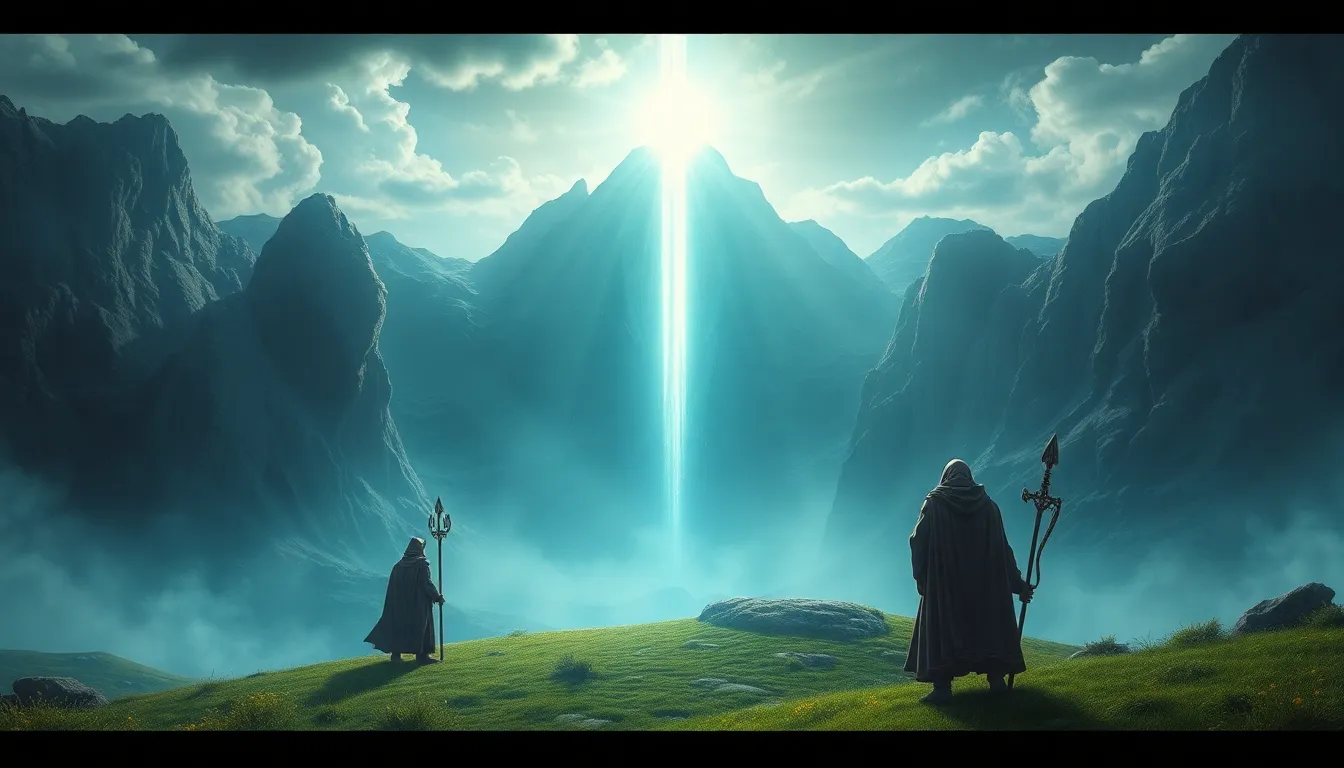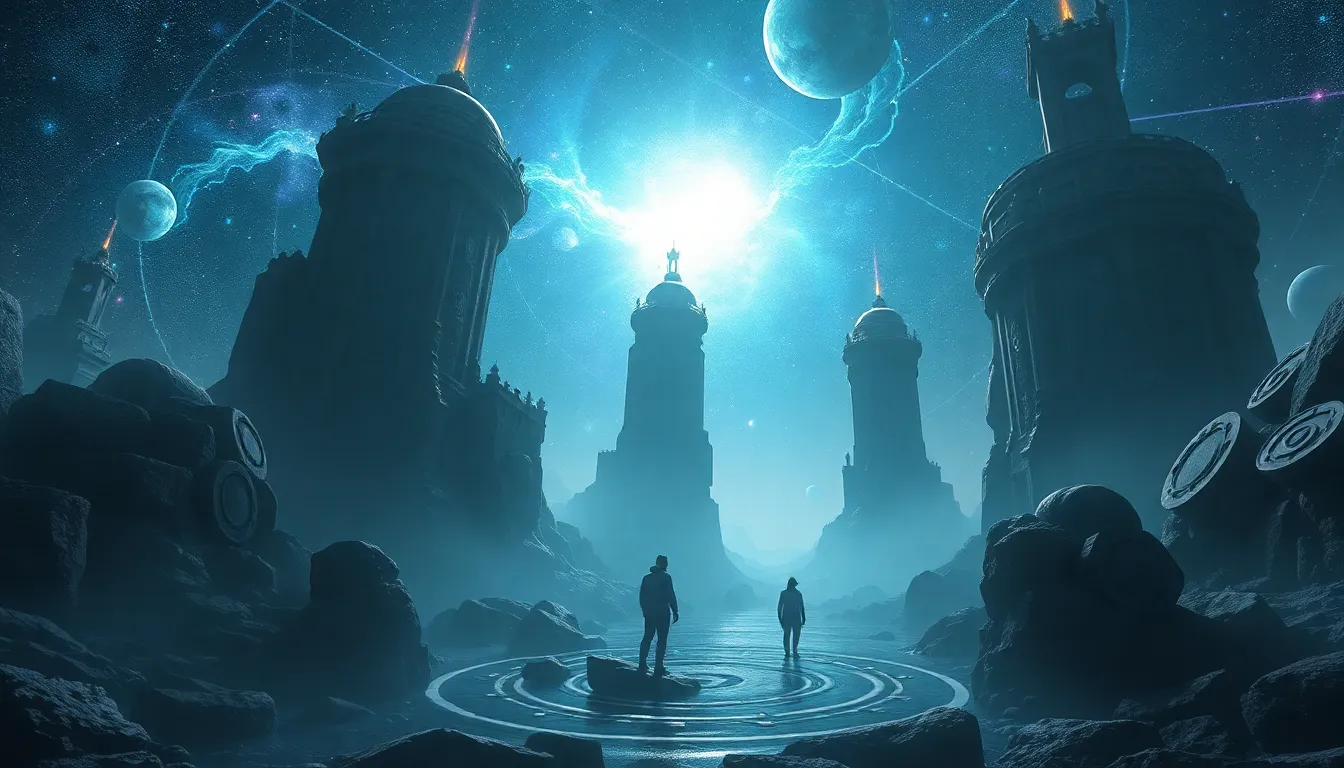The Legendary Kingdom of the Chosen Ones: Myths of Destiny
I. Introduction
The concept of the “Chosen Ones” has permeated various mythologies, serving as a beacon of hope, destiny, and the extraordinary potential of individuals. In these narratives, the Chosen Ones are often depicted as individuals selected by divine forces or fate to fulfill a significant purpose, usually involving the salvation or transformation of their world.
This article will delve into the legendary kingdom of the Chosen Ones, exploring its significance across cultures, the evolution of the archetype, and its enduring relevance in contemporary society. By examining the myths, prophecies, and trials associated with these figures, we aim to uncover the deeper meanings that resonate through time.
II. Historical Context of the Chosen Ones
The archetype of the “Chosen One” has roots in ancient mythologies, where heroes were often portrayed as divinely favored individuals destined for greatness. From the epic tales of Gilgamesh in Mesopotamian lore to the heroic narratives found in Greek mythology, these figures embodied the ideals of courage, strength, and moral integrity.
Over the centuries, the concept of the Chosen One evolved, adapting to the cultural contexts of different eras:
- Ancient Civilizations: In many early societies, chosen individuals were seen as mediators between gods and humans.
- Medieval Legends: Stories of knights and heroes often depicted chosen figures tasked with quests that mirrored societal values.
- Modern Interpretations: Today, the archetype continues in literature and media, reflecting contemporary struggles and ideals.
The interplay of destiny and fate is central to these legends, suggesting that while the Chosen Ones may be selected for greatness, their paths are fraught with challenges that test their resolve and moral character.
III. The Kingdom of the Chosen Ones: Geographic and Cultural Landscape
Imagining the kingdom of the Chosen Ones involves creating a rich tapestry of geography and culture. This legendary realm is often depicted as a mystical land filled with breathtaking landscapes, from majestic mountains to enchanted forests, each location imbued with its own significance.
The cultural traits and societal structures within this kingdom often emphasize:
- Harmony with Nature: The inhabitants typically have a profound connection to the natural world, often depicted as guardians of the land.
- Rituals and Traditions: Celebrations and rituals play a crucial role in maintaining the societal fabric, often centered around the Chosen Ones and their destinies.
- Hierarchy of Heroes: A structured society where warriors, sages, and common folk each play a role in supporting the Chosen Ones.
The kingdom’s influence often extends to neighboring realms, shaping their cultures and mythologies through tales of bravery and sacrifice, reinforcing the overarching theme of destiny and choice.
IV. Prominent Myths and Legends of the Chosen Ones
Throughout history, various myths have emerged that highlight the journeys of chosen heroes. These legends often share common themes and motifs, including:
- The Hero’s Journey: A narrative arc where the hero embarks on an adventure, faces trials, receives assistance, and ultimately achieves transformation.
- Good vs. Evil: Many myths depict a struggle against malevolent forces, illustrating the moral challenges faced by the Chosen Ones.
- Divine Intervention: The presence of gods or supernatural beings who guide and support the heroes, often through signs and omens.
Notable figures like King Arthur, Hercules, and Frodo Baggins serve as exemplars of these themes, each embarking on quests that define their legacies within the kingdom.
V. The Role of Prophecies in Shaping Destiny
Prophecies are a common narrative device in the myths surrounding the Chosen Ones, often serving as catalysts for the heroes’ journeys. These predictions can set the stage for conflicts and resolutions, guiding characters toward their fates.
Key prophecies associated with the Chosen Ones often include:
- A foretelling of greatness or doom, compelling the hero to act.
- Warnings of trials that one must overcome to fulfill their destiny.
- Visions that provide insight into the future, influencing choices and relationships.
The impact of these prophecies extends beyond the individual, often affecting the collective fate of entire kingdoms or civilizations, highlighting the interconnectedness of choice and destiny.
VI. Trials and Challenges Faced by the Chosen Ones
The path of the Chosen Ones is seldom smooth; these heroes face a multitude of trials that serve both as physical challenges and symbolic tests of character. Common trials depicted in myths include:
- Battles Against Adversaries: Confrontations with formidable foes that test the hero’s strength and courage.
- Quests for Knowledge: Journeys that require wisdom and understanding, often involving mystical encounters.
- Personal Sacrifices: Moments where heroes must relinquish something dear to achieve their goals.
These challenges are not merely obstacles; they symbolize the internal struggles faced by individuals in their own lives. Through these trials, heroes often experience profound personal growth, emerging wiser and more resilient.
VII. The Guardians and Mentors of the Chosen Ones
In the journeys of the Chosen Ones, the presence of mentors and guardians is crucial. These figures provide guidance, wisdom, and support, often playing pivotal roles in shaping the heroes’ destinies.
Notable guardian figures across various myths include:
- Merlin: The wise wizard who guides King Arthur.
- Gandalf: The mentor to Frodo in “The Lord of the Rings,” offering wisdom and protection.
- Yoda: The Jedi Master who trains Luke Skywalker in “Star Wars,” emphasizing the importance of patience and discipline.
The dynamic between mentors and their protégés often reflects the balance of teaching and learning, highlighting the importance of relationships in personal growth and the fulfillment of destiny.
VIII. The Concept of Sacrifice in the Myths
Sacrifice is a recurring theme in the myths of the Chosen Ones, often serving as a crucial element in the pursuit of destiny. The sacrifices made by heroes can take various forms, including:
- Personal Loss: Heroes may lose loved ones or personal comforts in their quest.
- Risking Life: Many myths depict heroes facing mortal danger to save others or fulfill their prophecies.
- Abandoning Power: Some must relinquish power or ambition for the greater good.
The moral implications of these sacrifices often reflect societal values, prompting discussions about duty, honor, and the costs of greatness.
IX. Modern Interpretations of the Chosen Ones
The influence of ancient myths continues to resonate in contemporary literature and media, where the archetype of the Chosen One is prevalent. Examples of modern narratives include:
- “Harry Potter”: The story of a young wizard destined to confront dark forces.
- “The Matrix”: Neo’s journey as the prophesied savior of humanity.
- “The Hunger Games”: Katniss Everdeen as a reluctant hero challenging oppressive systems.
Critical perspectives on the Chosen One archetype in today’s society often explore themes of privilege, the complexities of heroism, and the nature of destiny, inviting audiences to reflect on their own roles in shaping their futures.
X. Conclusion
The legendary kingdom of the Chosen Ones encapsulates a rich tapestry of myths and narratives that speak to the human experience. Through tales of


